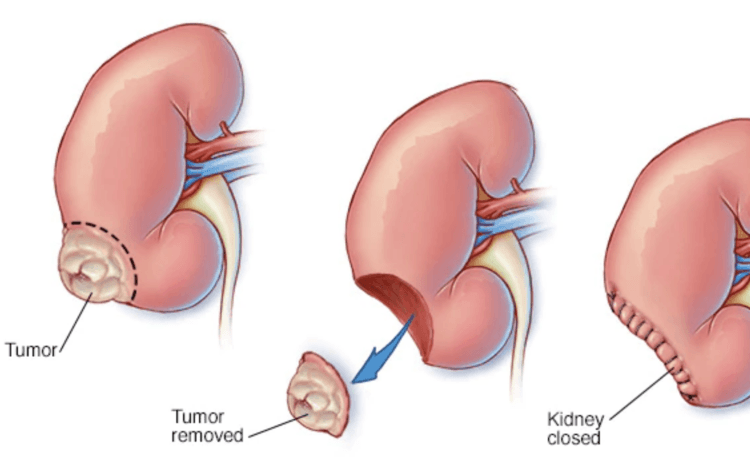Nephrectomy in Warsaw
Search and Compare the Best Clinics and Doctors at the Lowest Prices for Nephrectomy in Warsaw

Find the best clinics for Nephrectomy in Warsaw
With Medijump you can browse 1 facilities offering Nephrectomy procedures in Warsaw. The cheapest price available is $2,518 in Warsaw. And for the cheapest price globally, prices start from $1,228 in Morocco.
Nephrectomy in Poland
Price: $ 2,518
Nephrectomy in Warsaw
Price: $ 2,518
Morocco offers the best prices Worldwide
Price: $ 1,228
Luxmed, located in Pulawska, Warsaw, Poland offers patients Nephrectomy procedures among its total of 70 available procedures, across 13 different specialties. The cost of a Nephrectomy procedure starts from ฿90,600, whilst the national average price is approximately ฿90,600. There is currently a lack of information available on the specialists practicing at the Clinic, and they are not accredited by any recognized accreditations institutes
WHY US?
At Medijump, we're making medical easy. You can search, compare, discuss, and book your medical all in one place. We open the door to the best medical providers worldwide, saving you time and energy along the way, and it's all for FREE, no hidden fees, and no price markups guaranteed. So what are you waiting for?

Free

Best Price

Widest Selection

Risk-Free
What you need to know about Nephrectomy in Warsaw

Nephrectomy is the surgical removal of all or part of a kidney. There are two types of surgery for nephrectomy: radical nephrectomy (to remove the entire kidney and tissues of fat that surround the kidney) and partial nephrectomy (removes only diseased tissue from a kidney and leaves the healthy tissue in place). The surgery is performed to treat kidney cancer and other kidney diseases. Sometimes, it is also performed to remove a healthy kidney from a donor for a transplant.
What does a Nephrectomy Procedure Involve?
Nephrectomy can be performed through laparoscopic or open surgery. Both are performed under general anesthetic. Laparoscopic nephrectomy is usually performed to remove part of your kidney. Your surgeon makes small incisions in your abdomen to insert the laparoscope and small surgical tools. If your entire kidney needs to be removed, your surgeon will use open surgery. During open surgery, your surgeon makes one large incision on your abdomen or along your side.
How Long Should I Stay in Warsaw for a Nephrectomy Procedure?
You are required to stay in the hospital for two to five days. Plan to stay in Warsaw for around 10 to 14 days because you are likely to develop deep vein thrombosis after the surgery. You will also need to attend follow-up checkups, during which your surgeon will remove your stitches.
What's the Recovery Time for Nephrectomy Procedures in Warsaw?
The recovery period after a nephrectomy may take around three to six weeks. During your recovery period, you should avoid any strenuous activity and follow the post-operative instruction that your surgeon gives you. The instruction usually includes dietary restriction, exercise, and care for your healing wounds
What sort of Aftercare is Required for Nephrectomy Procedures in Warsaw?
Most people can function well with only one kidney. After the procedure, you can resume your daily routine and activities after 3 weeks. However, you will likely need checkups to monitor kidney function. These include monitoring your blood pressure, waste filtration, and protein urine levels. Since you only have one kidney, you will need to eat a healthy diet and engage in regular exercise to preserve normal kidney function.
What's the Success Rate of Nephrectomy Procedures in Warsaw?
Nephrectomy is generally safe and the risks are very small. Partial nephrectomy has about a 95% success rate. Nevertheless, the procedure carries potential risks, such as bleeding, injury to nearby organs, infection, post-operative pneumonia, and rare allergic reaction to anesthesia.
Are there Alternatives to Nephrectomy Procedures in Warsaw?
For certain illnesses, there are alternatives that do not need the removal of a kidney. The alternatives include renal embolization.
What Should You Expect Before and After the Procedure
After nephrectomy, you will no longer experience symptoms that you had before the surgery. The risk of cancer, as well as cancer spreading to other parts of your body, is also reduced. Remember that taking care of your remaining kidney is extremely important.
Whilst the information presented here has been accurately sourced and verified by a medical professional for its accuracy, it is still advised to consult with your doctor before pursuing a medical treatment at one of the listed medical providers
No Time?
Tell us what you're looking for and we'll reachout to the top clinics all at once
Enquire Now

Popular Procedures in Warsaw
Prices Start From $2,487

Prices Start From $825

Recommended Medical Centers in Warsaw for Nephrectomy

- Interpreter services
- Translation service
- Religious facilities
- Medical records transfer
- Medical travel insurance
- Health insurance coordination
- TV in the room
- Safe in the room
- Phone in the room
- Private rooms for patients available

- Interpreter services
- Translation service
- Religious facilities
- Medical records transfer
- Medical travel insurance
- Health insurance coordination
- TV in the room
- Safe in the room
- Phone in the room
- Private rooms for patients available

- Interpreter services
- Translation service
- Religious facilities
- Medical records transfer
- Medical travel insurance
- Health insurance coordination
- TV in the room
- Safe in the room
- Phone in the room
- Private rooms for patients available

- Interpreter services
- Translation service
- Religious facilities
- Medical records transfer
- Medical travel insurance
- Health insurance coordination
- TV in the room
- Safe in the room
- Phone in the room
- Private rooms for patients available

- Interpreter services
- Translation service
- Religious facilities
- Medical records transfer
- Medical travel insurance
- Health insurance coordination
- TV in the room
- Safe in the room
- Phone in the room
- Private rooms for patients available

- Interpreter services
- Translation service
- Religious facilities
- Medical records transfer
- Medical travel insurance
- Health insurance coordination
- TV in the room
- Safe in the room
- Phone in the room
- Private rooms for patients available

- Interpreter services
- Translation service
- Religious facilities
- Medical records transfer
- Medical travel insurance
- Health insurance coordination
- TV in the room
- Safe in the room
- Phone in the room
- Private rooms for patients available

- Interpreter services
- Translation service
- Religious facilities
- Medical records transfer
- Medical travel insurance
- Health insurance coordination
- TV in the room
- Safe in the room
- Phone in the room
- Private rooms for patients available

- Interpreter services
- Translation service
- Religious facilities
- Medical records transfer
- Medical travel insurance
- Health insurance coordination
- TV in the room
- Safe in the room
- Phone in the room
- Private rooms for patients available

- Interpreter services
- Translation service
- Religious facilities
- Medical records transfer
- Medical travel insurance
- Health insurance coordination
- TV in the room
- Safe in the room
- Phone in the room
- Private rooms for patients available
Nephrectomy in and around Warsaw
About Warsaw
As the capital and largest city of Poland, Warsaw continues to charm its visitors with diverse architecture, cultural treasures, stunning outdoor spaces, and superb dining spots. With Poland’s recent emerging popularity in medical tourism, the city has seen an influx of foreign patients coming for its world-class healthcare. The city’s very high standard of living and universal healthcare system are seen as an attractive choice for international medical tourists, particularly those from the surrounding countries. Both the public and private medical centers in this city are equipped with the latest medical technology and are offering a wide range of medical procedures at significantly lower prices than other countries in Europe. The most sought-after procedures in the city are cosmetic surgery, orthopedic, bariatric, and dental treatments.
Popular Parts of Warsaw
Warsaw offers a beautiful blend of old and new. Visitors are welcomed with restored Gothic buildings and modern glass structures standing side by side. One of the most popular attractions is the Palace of Culture & Science, which is a ‘gift of friendship’ from the Soviet Union and is the second tallest building in Poland. As a vast recreation and educational facility, this building is filled with theatres, cinemas, and museums. Most people also come to wander around the streets of the city’s Old Town, the oldest part of the city, to see medieval architecture and visit the Old Town Market Place. Warsaw is also known as the former home of Frédéric François Chopin and visitors are welcome to retrace his steps by strolling around Saxon Garden.
Transport in Warsaw
The main airport is Warsaw Frederic Chopin Airport and it is the largest and busiest airport in Poland that connects with many cities around the world. To get around Warsaw, local buses are available and they’re reasonably priced. Taxis are the most convenient way to get around and are relatively cheap. However, ensure to avoid unlicensed taxi drivers as they will charge more. The safest way to get a taxi is by asking your hotel staff for the number of the taxi company they use. Cycling is also a good way to explore the city.
Visas in Warsaw
Since Poland is a part of the Schengen area, citizens of several countries, including the US, Canada, Australia, and Japan, can stay in Warsaw without a visa for up to 90 days. EU citizens do not need a visa and are allowed to stay indefinitely. Citizens of other countries are required to obtain a visa in advance. A passport valid for at least 6 months is required.
Weather in Warsaw
Summer (June – August) has unpredictable weather with warm temperatures, sometimes reaching 30°C. Autumn (September – November) brings cooler temperatures and more pleasant weather. Winter (December – early March) can be freezing, with the temperatures dropping to -20°C on the coldest days. Spring (late March-May) is characterized by warmer temperatures and less rain.
Additional Info
- Local Currency: Polish Zloty (PLN) is the official currency and 1 USD converts to approx. 3.8 PLN.
- Money & Payments: ATMs are widely available in Warsaw. Credit cards can be used in most restaurants and hotels. Tipping is optional.
- Local Language: Polish is the official language. Most people in tourist areas can speak decent English.
- Local Culture and Religion: Warsaw is a multi-cultural city. Christianity is the largest religion, but other religions are also present in the city.
- Public Holidays: Warsaw celebrates major Christian holidays, such as Christmas Day and Easter. There are also some national holidays celebrated in the city, including Constitution Day and Independence Day.
Popular Searches
- Plastic Surgery in Thailand
- Dental Implants in Thailand
- Hair Transplant in Thailand
- Breast Augmentation Thailand
- Gastric Sleeve in Thailand
- Gender Reassignment Surgery in Thailand
- Laser Hair Removal in Bangkok
- Botox in Bangkok
- Dermatology in Bangkok
- Breast Augmentation in Bangkok
- Coolsculpting in Bangkok
- Veneers in Turkey
- Hair Transplant in Turkey
- Rhinoplasty in Turkey
- Stem Cell Therapy in Mexico
- Rhinoplasty in Mexico
- Liposuction in Mexico
- Coolsculpting in Tijuana
- Rhinoplasty in Korea
- Scar Removal in Korea
- Gastric Sleeve in Turkey
- Bone Marrow Transplant in India
- Invisalign in Malaysia
- Plastic Surgery in the Dominican Republic
- Tummy Tuck in the Dominican Republic
- Plastic and Cosmetic Surgery in Poland
- Rhinoplasty in Poland
- Hair Implant in Poland
- Dental Implants in Poland
- IVF in Turkey
